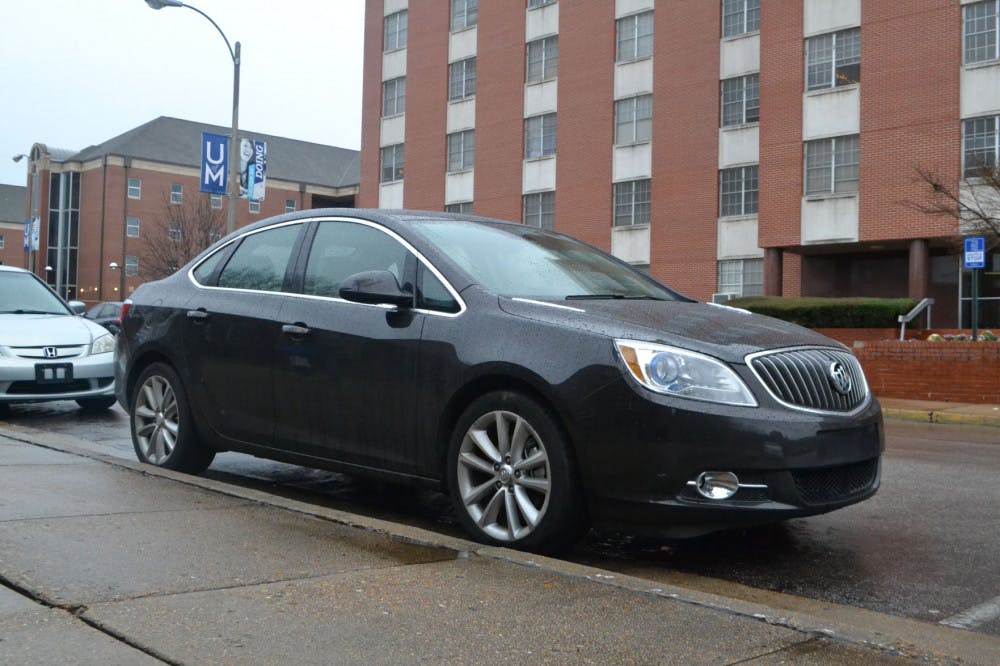With papers and exams in high demand of the average college student, time is in short supply. A lot is required of students and financial obligations and responsibilities persist. A part-time job is a student’s best friend.
This is why taxi-alternative applications such as Lyft and Uber are becoming increasingly popular.
There are roughly 160,000 Uber drivers in America, according to The Wall Street Journal. It is unclear exactly how many drivers Lyft currently has across the country, according to Fortune magazine, but the company operates in more than 200 U.S. markets and has raised about 1.4 billion from investors.
Drivers of these services have the flexibility in creating their own schedule, making “Uber/Lyft driver” a job title that appeals to many students.
Hunter McCormick is an engineering technology major and former Uber driver.
“I probably drove somewhere around 15 people,” McCormick said.
The 23-year-old turned to the service because of its flexibility. According to Hunter, the average driver can also make a decent amount of money.
“I will say it depends on how new your car is (if you should consider doing it),” he said.
With both Uber and Lyft, drivers are responsible for their own vehicle. The mileage and gas are the sole responsibility of the driver.
Enad Abujodeh works for both Uber and Lyft. Originally from Jerusalem, the Jordan-bred 38-year-old has developed a system for juggling the two services.
“You turn on both apps,” Abujodeh said. “When one contacts you, you turn off the other. It’s that simple.”
Abujodeh has a wife, three children and is waiting for approval to attend Southwest College.
“I do have a lot to do,” he said.
Abujodeh also works as a waiter at Casablanca when he’s not driving or spending time with his family. He said his culture has inspired him to encourage others to become drivers themselves.
“We share the food,” Abujodeh said. “We share the pain. We share the happiness. My philosophy is if you know something that can help others, you tell them.”
According to him, the most profitable times to drive are during concerts and sporting events. Both Uber and Lyft drivers retain 80 percent of the profits for the day, according to Abujodeh. The other 20 percent is used as a sort of fee for using the application. Drivers also have the ability to reasonably adjust their fare.
“If you do it full-time, you can survive,” Abujodeh said.
Patrick Long, 22-year-old senior at the University of Memphis, is not an Uber driver, but said he would consider doing it if he needed the extra money.
“I know a lot of people who have talked about doing it, but haven’t actually done it,” Long said.
Long said that those who haven’t “done it” are resilient because they are afraid.
“People aren’t as trusting to let strangers in their car (in Memphis),” Long said.
McCormick thinks the size of the Bluff City contributes to Uber not being quite as popular here as in other, larger cities.
“The only places we go here is downtown or midtown,” McCormick said. “There’s a lot more places to go in bigger cities.”
Christopher Rembert, 47, said working as an Uber driver is “not worth it.” He started driving for Uber just three weeks ago after getting laid off from a previous job.
“It’s your vehicle, your car and your gas,” he said.
He also dislikes the fact that you can never speak as an employee to an actual person from the service.
“You email them, and they get back to you as quickly as possible,” Rembert said. “But if I got into an accident right now, I couldn’t talk to a live person.”
He still believes the job could work for younger drivers.
“This would be great for a college kid,” Rembert said. “You couldn’t support a family with Uber.”
Theresa Kassis, 18, said she would love to try being a driver. However, she has apprehensions about riding. She’s rode only once, while visiting family in California.
“I was a little nervous,” Kassis said. “It probably helped that (the driver) was an older man.”
Uber and Lyft perform background checks on all of their drivers. All drivers must own a vehicle, have insurance and, of course, a driver’s license.
“You wanna be a driver?” Abujodeh said. “Why not?”
Uber currently employs about 160,000 drivers in the United States. Uber and Lyft allow their drivers to turn the app "on" and "off," making it a very flexible work option for busy college students.





